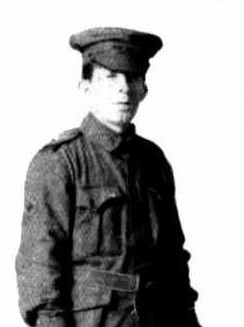
14934
RIEUSSET, Robert James
| Service Number: | 12663 |
|---|---|
| Enlisted: | Not yet discovered |
| Last Rank: | Private |
| Last Unit: | 11th Field Ambulance |
| Born: | Not yet discovered |
| Home Town: | Not yet discovered |
| Schooling: | Not yet discovered |
| Occupation: | Clerk |
| Memorials: |
World War 1 Service
| 31 May 1916: | Involvement Private, 12663, 11th Field Ambulance, --- :embarkation_roll: roll_number: '23' embarkation_place: Adelaide embarkation_ship: HMAT Suevic embarkation_ship_number: A29 public_note: '' | |
|---|---|---|
| 31 May 1916: | Embarked Private, 12663, 11th Field Ambulance, HMAT Suevic, Adelaide |
WW1 Story
ROBERT RIEUSSET (b. 1884 d. 1966)
Robert Rieusset was living in Australia at the start of WW1. He joined up on 14 Jan 1916 (Serv No 12663) age 29. He joined the 11th Australian Field Ambulance. He was employed as a Clerk. He embarked for UK on 31 May 1916. Several months at Larkhill Camp (Salisbury). Embarked for France on 24 Nov 1916. See below for unit war history.
He survived the war. He was returned to Australia on 26 March 1918 on board SS Lancashire and was discharged on 18 May 1919. His records state he was ‘Medically Unfit (not due to misconduct)’ with Rheumatism .
11th Australian Field Ambulance – Pte Robert Rieusset 12663
11th Field Ambulance, Australian Army Medical Corps, was officially formed at Mitcham, South Australia on 1 March 1916 and became an integral part of the Third Australian Division. LTCOL M. H. Downey (No relation!) was appointed as the CO (10 Feb 1916 – 25 Oct 1917). Once raised the unit commenced training in the hills to the south of Mitcham. This training was to prove remarkably valuable, as the terrain was very similar to that which the unit would soon encounter in France.
The unit embarked for England in four groups on different ships, the Suevic, Berrima, Wandilo and the Africa between 31 May 1916 and 30 June 1916. The first group arrived at Plymouth on 21 July 1916 and the unit was united at Salisbury Plain (Lark Hill Camp) for further training. The Unit spent four months in the Salisbury Plains. On the 24 November 1916 the unit embarked at Southampton for France.
On reaching Le Harve they entrained for the forward zone on the afternoon of the 26th, three days later they dis-entrained at Bailleul. The unit then route marched for two and a half days before they eventually took over the Divisional Rest Station at Steenwerck. This station would become historic as it was the first station that they administered in France. Secondly on account of the amount of pioneering work that was accomplished, thirdly it was here they spent their first two Christmases in France.
From here the unit undertook various duties in support of the Third Division. These duties included running sector medical posts and stations, operating Advanced Dressing Stations and running rest areas. The unit first casualties occurred while in the Le Bizet sector, when the enemy shelled the Advanced Dressing Station. Two cooks were badly wounded, one succumbing to his wounds a few days later on 7 April 1917.
During it’s time on the Western Front the Ambulance was involved in numerous areas and sectors including, Ploegsteert, Messines (No carry was under two miles over soft ground.), Charing Cross (in this area doctors and personnel were also compelled to work with gas marks on.), Ypres (Broodseine Ridge, Passchendaele and Flanders Ridge), the Somme and Villers Bretonneux. The casualties were numerous, and the bearers had a very strenuous task evacuating them from the various posts. In the final stages of the war the Ambulance was involved in the last Somme operations in 1918.
From the time of its first casualty in April 1917 to the cessation of hostilities the unit experienced 19 killed in action, 56 wounded in action. As well as 41 men were gassed of which one subsequently died, so for a period of just under two years active service the unit had 116 casualties. The unit returned to Australia and was demobilized in 1919.
Submitted 12 May 2025 by Ken Moore









